|

Flying
Carpets by Hedy Habra
Book
Review by Zinta Aistars
Perfect Paperback: 203 pages
Publisher: March Street Press, 2012
Price: $15.00
ISBN-10: 1596611685
ISBN-13: 978-1596611689
I grew up reading Latvian folk tales, and
as an adult, I have often experienced that a-ha moment of realization that much of my value system, my work ethic, my life
outlook, has been developed by those enchanting tales of my childhood. Oh, how I loved to read as a little girl! And still
do. So when I opened up Flying Carpets, and immersed in the world on the page before
me, I felt myself as if traveling back in time to that sweet world of long ago.
Initially, I couldn't quite understand why
I was so drawn to these tales of exotic lands, magic and fantasy, but then I realized that childhood connection. That's it!
We all love going back, back to our past of innocence and wonder—and Hedy Habra masterfully waves her writing wand and
brings us there with this collection.
These are stories influenced by the author's
Middle Eastern background in Egypt and Lebanon. From there fly and float these magic carpets, as we read about temples and
mountain villages, gliding boats and fragrant kitchens, flaming fish and rich tapestries. Traditions surface to conflict with
contemporary issues. The further into the book one reads, the more fantastical the stories become.
Habra's language, which no doubt is only enriched
by the fact that the author speaks several, lulls with a powerful magic of its own:
"Calm
down, child. Fear is a gust of cold wind you must not allow in your mind or heart. The way torrential storms ruthlessly invade
fragile houses, fear's whirling eddies will possess you, penetrating through the least fissures … Look closely and see
how tightly woven is the braided wheat wreath framing her, protecting her from all winged creatures, stallions, falcons, lions,
even from angels. Like her, retreat into your center." (Page 175)
Habra's language alone is enough to transport.
These are fairy tales for the adults who still believe—and those who need awakening from forgetting how to believe.
These stories tell tales of love and loss, of a longing to leave the known behind and enter something greater and more universal—and
surely that is the echo of the universal human heart. Each story builds an intimate world around the reader, often, but not
always, with strong women in leading roles, even when they are struggling against cultural constraints demanding conformity.
Through magical realism, these characters reflect the inner voices many of us hold deep inside.
Flying
Carpets is a story collection in the grand tradition of storytelling. For those who know Habra's poetry, discovering her
equal expertise in prose will be a treat.
Hedy Habra, born and raised in Egypt, is of
Lebanese origin. She received her M.F.A. and a Ph.D. in Spanish Literature from Western Michigan University where she currently
teaches. Her poetry and fiction in French, Spanish, and English have appeared in numerous journals and anthologies, including
The Smoking Poet, Puerto del Sol, The New York Quarterly, Cider Press Review, Nimrod, Poet Lore, and Dinarzad's Children Second
Edition. Her critical essays have appeared in literary journals such as Chasqui and Latin American Literary Review. Her newest
title is Tea in Heliopolis, a poetry collection published by Press 53.
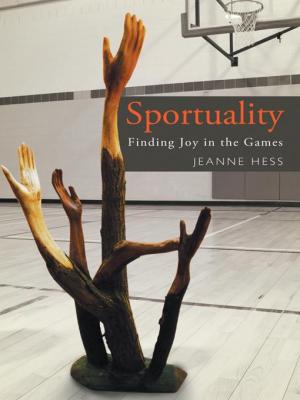
Sportuality:
Finding Joy in the Games by Jeanne Hess
Book
Review by Zinta Aistars
Paperback: 248 pages
Publisher: Balboa Press, 2012
Price: $17.99
ISBN-10: 145254381X
ISBN-13: 978-1452543819
I listened to the news sportscaster and thought
of Jeanne Hess. I wondered, what would she think of this fierce language? "Our team will annihilate them," the newscaster
swore, lifting a fist of victory in the air, referring to the local football team doing battle with the opposing team. The
news anchor tossed her comments into the swirl, using phrases like: beat them into the ground … grind them to dust …
smash them to smithereens … flatten and destroy.
One might think this was the language of war.
"When
we peel words back to the original meaning, they provide us with an intent that often differs from current cultural thought
and offer a level of understanding that enlightens the soul." (Page 32)
I read the pages of Sportuality with increasing interest. If I entered with doubts, I emerged with none. Mind you, I'm not what one
would call a sports fan. I played center on a girls' basketball team in school, and I wasn't bad in track, and now and then
I've tossed a ball with friends. But a fan? Not really. My remote control never stalls on ESPN. It's possible that the violent
factor in sports has something to do with that.
Interestingly enough, even though I don't
usually watch sports games (I enjoy being at the actual games, not watching them on television), it occurred to me that quite
a few of my favorite movies were sports stories. How does that make sense? Reading Sportuality,
I realized why.
Sports movies are about a hero's quest. An
athlete is on a quest to achieve his or her own personal best, against all odds, rising above all obstacles, enduring through
all conflicts, fulfilling potential. All the elements of a great story are there—and I'm a writer. I love a good quest.
In fact, if I started reading Sportuality with skepticism, that was soon why I found myself immersed and enjoying the read. Hess isn't citing
sports statistics here. She's talking about a hero's quest, and she writes about the roots of language. She tells great stories,
memorable and inspiring ones, and she leaves "time-outs" for reader introspection, offering questions for exploration.
"Sportuality" is a concept of blending sports
and spirituality. Dividing the book into sections that have the reader contemplate competition, community, communication,
spirit, humor, enthusiasm, education, religion, holiness, sanctuary, sacrifice, and victory, Hess begins by examining the
roots of the words. As it turns out, more times than not, contemporary sports-loving society has so mangled these common words
and concepts that their original meaning has been, well, annihilated. Hess resurrects them to accuracy.
Sports, she writes, is actually a means of
human communication. Sports "is a vehicle for life." As for the spiritual aspect, Hess states that God intended us to play
and have fun in life—and thus, her mission to restore the fun in games. Hess discusses the spiritual, even religious,
aspect of sports (from this comes the word, and the concept of sportuality), and anyone who does watch sports will attest
to the constant call to prayer before games, references to team spirit, and the similarities in spiritual pilgrimages to an
athlete's quest for excellence.
The parallel quests for the divine and for
excellence in sports are not at all far-fetched, although some readers may chafe a little at the idea of worship as applied
to sports. It is certainly something that has bothered me, and perhaps has something to do with why I have not become a sports
fan—so many such fans really do seem to worship sports and athletes, taking it to a level that may belong more in a
house of worship than a ball park. Hess gives us another look at these parallels.
Considering that God refers to the physical
body as a "temple," Hess may just have a point here. We have taken sports too far into the physical realm alone, and Hess
is calling us back to consider its spiritual side. Competition, she writes, is not a word that means to annihilate or grind
to dust or beat to smithereens. When we take it to its roots, it is actually a concept that means playing with another in
a manner that brings out the best in both.
That gave me pause. As did much of what Hess
discusses in Sportuality. By book end, I understood my resistance to sports was
a resistance to violence, not to the game. Hess had indeed restored the joy. More, she has a call to all of us to reconsider
how we play the game. Not to "sissify" that game, because her call is to achieve excellence, overcome obstacles, learn endurance
and persistence in the pursuit of our quest, but without taking it down to us vs. them, and debasing sports to the ugliness
of violence.
Sportuality
is an important book. In a society immersed in sports, we must take a second look at our approach to the games. At a time
when football, for one, is being reexamined as so violent that athletes are sustaining life-threatening damage to their bodies,
we would be wise to step back to consider the part we left on the bench: true team spirit.
Jeanne Hess is a native of Detroit, Michigan,
and was a varsity athlete at the University of Michigan in the 1970s. She has been a volleyball coach, professor of physical
education, and college chaplain at Kalamazoo College for nearly 30 years, and is the wife of a coach and the mother of two
professional athletes. She lives in Kalamazoo, Michigan, with her husband, Jim, whom she met in a gym.

Devil
in the North Woods by Walt Shiel
Book Review by Zinta Aistars
Paperback: 246 pages
Publisher: Slipdown Mountain Pubns, 2005
Price: $14.95
ISBN-10: 0974655317
ISBN-13: 978-0974655314
Like any wildfire, it begins with a spark.
A small flame, and at first it is hard to tell if it will take off and blaze, or end in a whisper of smoke. Devil in the North Woods, a historical novel based on the 1908 fire that destroyed the town of Metz, Michigan,
and left 43 dead and 4,600 residents suddenly homeless, begins just that way. A spark, a simmer, a lick of flame, and then,
increasingly, the novel blazes with its storyline.
Author Walter Shiel based his novel on research
that includes oral histories and various reports. He chose as his main character the real person of Henry Hardies, who at
the time of the Metz fire was a 10-year-old boy who lost his mother and three sisters to the fire. Photos bring reality to
the story, reminding the reader that fire destroys without mercy.
Aside from the Hardies boy, however, are intertwined
the many stories of other Metz residents. A school teacher, a young and rattled woman looking for her fiancé, a husband and
wife battling for their farm who are burned nearly to death, yet survive with a remarkable endurance and will to live. And
others. Together, they bring the reader straight into the flames, sensing the rising heat of the steel walls of a train that
Metz residents hope outruns the wall of flame, or into the woods where exhausted runners fall to the ground for a breath of
less smoky air at earth level, going so far as to press their faces into holes they scratch into the soil that work like air
filters.
Sometimes, all one can do is run, run for your
life:
"Henry
found himself in the lead, running furiously with his arms stretched out to knock the brush aside. The forest seemed to tilt
and whirl around him. He crashed into a tree trunk, rolled away from it, and ran into the prickly needles of a small pine.
He bounced off the pine, twisted around, and slammed face-first into another tree. Something sticky ran down his forehead
and into his right eye. He wiped it with the back of his right hand and looked at it. Even in the uncertain, flickering firelight,
he recognized it.
Blood.
My blood." (Page 132)
Here is tragedy, families burned alive, homes
held over generations turned to ash, but here also is a story of the human spirit that rises from that ash to build new lives.
By end of the novel, the reader will be flipping pages quickly to find out who survives and who does not, and how. Some endings
are predictable, no less interesting. Shiel does an excellent job of bringing history alive.
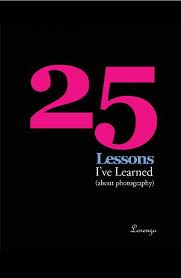
25
Lessons I've Learned About (Photography) Life by Lorenzo Dominguez
Book
Review by Zinta Aistars
Paperback: 146 pages
Publisher: CreateSpace, 2011
Price: $19.99
ISBN-10: 1456574485
ISBN-13: 978-1456574482
In the spring of 2005, writes Lorenzo Dominguez,
he and his wife became separated, and he found himself looking for a roof to put over his head. He eventually found a small
room in a Manhattan church sanctuary, and while living there, going through the introspection that most of us do when going
through traumatic events in our lives, he took up photography.
His hobby soon became much more than just
a hobby. Photography was in itself the vehicle of his life introspection. Through images taken throughout New York City, mostly
at night, Lorenzo gets a new perspective on life and realizes that many of the lessons of photography apply to life. These
25 lessons begin with "everything is beautiful" and then go on to incorporate lessons of perseverance, learning to let go,
telling the truth, experimenting, being yourself, striking a balance, and many more.
None of these lessons are earth-shatteringly
original or surprising. Indeed, most if not all are cliché. Still, the way Lorenzo presents these lessons, and doing so through
the lens of camera, does lend them some originality. His narrative voice is pleasant, even comforting, and his journey is
one with which many can identify. The places he arrives are good ones, even if he does sometimes practice rather risky behavior
to get his shot.
"…I
knew only failures gave in after failing the first time. Too many people just quit after failing the first try because they
immediately lose their self-confidence. Winners never concede to circumstance, they just keep on trying and continue to believe
in themselves and in their aspirations. And ultimately, they become whatever it is they believe to be true. For faith in oneself
is the first step toward truth."(Page 92)
What these lessons might look like in photography,
however … well, that's the disappointing part. In my hands was the paperback version of the book, and in its pages were
just a few, small photos, not particularly sharp in reproduction, none of which particularly corresponded to the text. It
seems that to fully enjoy the author's artistry, the reader is required to visit various sites online to view his work. That's
not particularly reasonable. As enjoyable as the author's story could be, had it been a real photo essay would have made a
world of difference.
Lorenzo's photographic journey of introspection
doesn't necessarily end up with a neat conclusion, or even a predictable one, but he does stay true to himself. By end of
the slim book, it's been an enjoyable enough read (and he tells of commercial success as a photographer), albeit missing the
view his lens might have provided.
Lorenzo Dominguez has been called an "Internet
photography sensation" by Time Out New York and is considered a "Flickr star" by Rob Walker, Consumed columnist, for New York
Times Magazine. His work is represented worldwide by Getty Images.
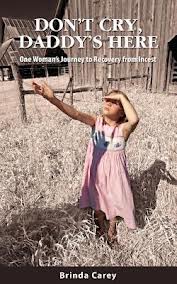
Don't
Cry, Daddy's Here: One Woman's Journey to Recovery from Incest by Brinda Carey
Book
Review by Zinta Aistars
Paperback: 256 pages
Publisher: White Bird Publications; 1st edition
(October 4, 2011)
Price: $14.95
ISBN-10: 0982802463
ISBN-13: 978-0982802465
The moment I opened Don't Cry, Daddy's Home, I knew this was going to be hard to read. It's difficult to think of any subject matter
more difficult to stomach than incest, the sexual molestation of a child by a family member … let alone her own father.
Yet sometimes we need to plow ahead, read and
bear witness to this now grown child's story. There is tremendous healing in storytelling, and there is great healing we who
listen to that story can offer to the story teller, by hearing her out and acknowledging her life experience. So I read.
This is Brinda Carey's story of her growing
up years, from the time she was hardly more than a toddler to the time that she was a young adult woman. No longer a victim,
but now fully a survivor, Carey would later earn a degree in criminal justice and work as a probation officer, and she would
marry and have children of her own. No doubt much of this was possible because she was able to share her horrendous experience,
talk about it, and she also had her husband to lean on—the story of how they met and how he persisted in supporting
her even when she resisted help is part of this story.
Not untypical in this kind of story is that
Carey's mother knew what was happening, at least to some degree, but turned her back on her child and failed to protect her.
Indeed, at times, she acted like a jealous wife angry at the threat of her husband's "affair" with his daughter. It is hard
to read about this without having to swallow the bile coming up at the thought alone. The challenge here is to stretch the
mind to encompass the thought that this woman, too, was to some degree an emotionally battered woman. With time, there was
a divorce, and eventually, even a reconciliation between mother and daughter.
I will not repeat here the events of this story.
Suffice it to say that a child is coerced, tricked, overpowered, overwhelmed by adult mind games, threatened, and, yes, repeatedly,
over all of those years, raped. Again, again, again. Finally, to the point of being impregnated, sometimes to have her pregnancy
end in miscarriage, but another time to result in the birth of a child who would eventually die due to genetic oddities caused
by two so closely related people as parents. It boggles the mind and breaks the heart.
Tragedy piles upon tragedy, until Carey is
finally able to mature and break free, once and for all, in spite of her father's threats to commit suicide, using this as
emotional blackmail in his attempt to keep her in his life. It is at this point that it would have been powerful to read more
about how this breaking free happens. The author might have shared more of her inner thought process and emotional processing,
to the point where she finds the strength and wisdom to escape her abuser. It would also have been powerful to read more about
how Carey achieves recovery—arguably much more powerful than the pages of quotes in the second half of the book that,
I would guess, few will bother to read.
The book is, in fact, in great part comprised
of biblical and other quotes, lists of resources. Carey's story, dotted with a few black and white photographs, comprises
only about half of the book. Since this doesn't appear to be a part of the book's marketing or description on the cover, that
can no doubt lead to disappointment for some readers expecting more of a full-length book.
Bottom line: this is not necessarily a gracefully
written book, but it carries weight as an addition to the resources available for the too many children growing into damaged
adults, trying to regain emotional health after being abused and molested by those they trust most. It is important for all
of us to be aware that this is a problem in our society, and that the perpetrators can very well be the man next door, the
one you wave hello to when outside mowing the lawn. I acknowledge the tremendous courage required of this author to speak
up and go public with her own story.
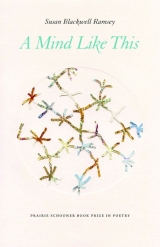
A Mind Like This, poetry by Susan
Blackwell Ramsey
Book Review by Zinta Aistars
Paperback: 112 pages
Publisher: University
of Nebraska Press (September 1, 2012)
Price: $17.95
ISBN-10: 0803243383
ISBN-13: 978-0803243385
Susan Blackwell Ramsey's first poetry collection,
A Mind Like This, is rich with humor. Read it and weep, probably with laughter,
sometimes with a wince, but never because she missed the mark. It is humor knit with wit, laced with the outrageous, intertwined
with the meticulous and wonderful detail that makes up life. Because we all know life is in the details.
First collection, sure, but Ramsey is already
well known (and well loved) in her community, and in the literary community far beyond the geographical one, for her poetic
skill. This collection, after all, has been some 20 years in the making, revised so many times, the poet says, that she's
not sure anymore what's in it and what's not.
I bet she knows. Ramsey's mind is crammed
with detail, dates, places, odd but fascinating tangents, one branching off into another, and another, and another. She likens
her mind to a junk drawer, but don't be fooled. These aren't the scraps; these are the poems that matter. Between the lines
of seducing Jimmy Stewart, and pickling heads because we want to make things last, third wedding receptions and scarlet bird
houses and useless beads that indicate an equally useless civilization, thawing turkeys and picking apart names like Kalamazoo,
children in church and Pablo Neruda at Water Street Coffee Joint, Ramsey weaves pure and complex ideas, the deeper understandings
of, yes, life. She gets it.
Her mind is like that. It's like this poetry.
Witty, clever, sharp, precise. The poets among her readers will recognize the forms she uses as skeletons to build upon, layering
muscle, flesh, skin. Sestinas, pantoums, sonnets, villanelles, iambic pentameter, yet nowhere does the poetry bog down with
form. The flow is easy, even between giggles.
And honest. She writes about Bell's Palsy,
her own coping with it, and bladders that are forever too small to bear the hour-long wait. It's the honesty that makes the
humor work. Yet for all the grins, this lacing of words is never without beauty. It's all in there, all of it. "Joy, daughter
of the difficult," Ramsey writes in a poem called "Washing My Husband's Kilt Hose: A 32-Bar Reel." Light requires dark, and
such keen humor requires a knowledge of suffering.
Ramsey's mind, never missing a thing, is just
as likely to make a quiet observation that haunts long after the reading (from "Why I Hate Storytellers"):
Good stories sneak up, they're glimpsed, overheard
from the booth behind you at the diner,
from the back seat, six hours into the trip,
on the radio, half over when you tune in.
Real storytellers are quiet, even reluctant.
Casual is their camouflage. After a long
march, supper cooked, night coming down,
the conversation passed around like a pipe,
one voice starts ambling down a path that forks
in unexpected directions and you feel
the great beast purring next to you in the dark,
its bristly chin on your shoulder, its breath in your ear.
Ramsey's voice of poetry is the one with its
chin on your shoulder, its breath in your ear, and it is a voice you will want to listen to, again and again.
Susan Blackwell Ramsey is the winner of the
Prairie Schooner Prize in Poetry for 2011. Ramsey earned her bachelor of arts at Kalamazoo College, and her MFA at the University
of Notre Dame's Creative Writing Program, where she received the department's Mitchell Award. She has taught high school,
gardened for hire, worked as a horticultural transparencies librarian, and for many years as a bookseller. She is now an instructor
of spinning, knitting and creative writing at the Kalamazoo Institute of Arts. Ramsey lives in Kalamazoo, Michigan, with her
husband, Wayne, with whom she raised three children, her knitting, her garden, and with her Kalamazoo College writers' group
closely circled in around her.

Red
Jacket: A Lute Bapcat Mystery by Joseph Heywood
Book
Review by Zinta Aistars
Hardcover: 432 pages
Publisher: Lyons Press
(September 18, 2012)
Price: $24.95
ISBN-10: 0762782536
ISBN-13: 978-0762782536
Sure, I’ll admit
it. I’m a Woods Cop groupie. You know, that gritty mystery series by Joseph Heywood about Michigan’s Upper Peninsula,
Grady Service and his sharp wit and expert moves through the woods, catching up with the eccentric bad guy(s). So now there’s
Lute Bapcat—and author Joe Heywood is still in good form picking odd names. There’s a story to this one, this
odd name, but that’s in the book pages for your own reading.
Is Lute Bapcat a predecessor
of Grady Service? Who knows where this new series will go, or if it might connect to the woods cops of today, but I rather
hope so. Bapcat has his beginnings as one of Michigan’s first civil service game wardens. The story opens fast in 1898
with Colonel Theodore Roosevelt shouting for his sharpshooter. That would be President Teddy, and the man with the sharp eye
and precise trigger finger—Lute Bapcat, Rough Rider, beaver trapper in the Keweenaw (the peninsula off the Upper Peninsula,
stretching its crooked finger into Lake Superior) and cowboy.
In the early 1900s, the
Keweenaw was a bustling industrial center with its fortune-making copper mines. Today, the area is quiet, drawing mostly only
tourists and history buffs, and some of the mines are now open for tours. Having lived in the Keweenaw myself for a while,
I have long been fascinated with the history, imagining the lives that were lived out in those old mining towns, and the lives
that were lived out in the dark, far below the ground, in those mile-deep mines. Bapcat gives us a window to see into that
time and brings Michigan U.P. history to vivid life.
Heywood’s trademark
is always to bring a colorful cast of characters to the pages of his novels, and he does so again in Red Jacket. Along with Bapcat himself, a loner from Copper Harbor, now pushed back into a messy civilization of
corrupt village leaders and mine owners, there is his love interest, Widow Frei, suspiciously something like a Madam in town
and who requests regular payment on Bapcat’s “debt” by visits to her bedroom; the hilarious Pinkhus Sergeyevich
Zakov, who becomes Bapcat’s sidekick and “wife”; George Gipp, the ballplayer from Laurium (you’ll
recognize him from “one for the Gipper” fame); and Big Annie, a character based on history who played an important
part in the bloody miner strikes, and many, many others.
The characters are placed
within well researched historical events: labor strikes that escalate into horrific violence that finally conclude with the
Italian Hall disaster in Calumet, where 73 lives, mostly women and children, family members of striking miners, were lost.
An arc and monument from the Italian Hall can still be found in Calumet (once called Red Jacket) today. And part of the mystery
trail is traversed by one of the newest contraptions of the time—a Model T from a man named Henry Ford in Detroit.
Bapcat and his sidekick
Zakov try to bring some order to the Keweenaw as countless deer are found decapitated and rotting in the woods, and water
streams are poisoned, killing fish and making well water undrinkable. All of this is meant to force the miners to return to
the mines or die of starvation, but survival in the mines means coping with inhumane conditions. The Michigan governor seems
to be turning a blind eye, while the local law enforcement is riddled with corruption.
Heywood is as sharp as
ever in his storytelling skills. His sense of humor is ever present, and his characters come alive in Technicolor, a movie
playing out before the reader’s mind’s eye. The dialogue is always realistic and spare and often laugh-out-loud
funny. Although there was a midpoint in the story where I thought it might be edited back a bit with a bog of historical detail,
it didn’t take long before I realized I would be making the switch easily enough from a Grady Service groupie to Lute
Bapcat fan. Heywood remains my favorite author when I crave a good mystery, set in northern wilderness. Just enough hints
were laid out for future stories in this new series, and I am eager to follow the trail.
Joseph Heywood is the author
of The Snowfly, Covered Waters, The Berkut, Taxi Dancer, The Domino Conspiracy—and
the eight novels comprising the Woods Cop Mystery Series. Featuring Grady Service, a detective in the Upper Peninsula for
Michigan’s Department of Natural Resources, this series has earned its author cult status among lovers of the outdoors,
law enforcement officials, and mystery devotees. Heywood lives in Portage, Michigan, but spends much of his time riding with
the real woods cops in the Upper Peninsula. For more on Joseph Heywood and the Woods Cop Mysteries, visit the author's web
site at www.josephheywood.com.
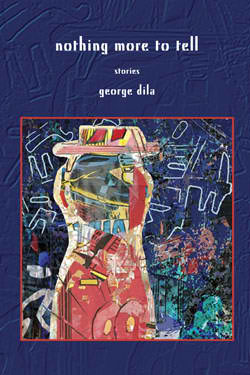
Nothing
More to Tell, stories by George Dila
Book Review by Zinta Aistars
Paperback: 100 pages
Publisher: Mayapple Press,
2011
Price: $15.95
ISBN-10: 193641905X
ISBN-13: 978-1936419050
Nothing more? After reading
the nine stories in this story collection by Michigan author George Dila, I'm betting he has plenty more to tell! At least,
one hopes. Each story has a satisfying twist, an unflinching turn, and more times than not, an element of surprise. Good reading.
Then again, maybe we shouldn't
be surprised. After all, Dila's stories are good reading because they are all so … real. These aren't the quests of
heroes. These are stories of the average Joe, the middle-class guy with middling experiences and views, the guy next door
with the door closed—until Dila opens that door for us to get a closer look. Unflinchingly authentic, even as one hopes
that there are more heroes out there between these men that can often be difficult to like.
Each of the nine stories
is set in a Michigan city, large or small, and they do have Michigan flavor, but could just as well be set anywhere. Main
characters are all men, with the exception of "Four Letters to Angelie Jolie," which is just that, letters, written by a female
maid who is trying to pull a fast one on a celebrity in an attempt to get adopted along with her children. Letters get nastier
and baser as the only response received is a photograph signed by Jolie, apparently no longer adopting.
First up in the collection
is "Lessons My Father Taught Me." The lead is a winner, instant hook:
"During the summer I was fifteen, on a muggy July night with nothing much else to do, my father and I began working
together, stealing from our neighbors."
While this may not be
the story of the guy(s) next door (hopefully), it has the element of the average in these two characters, father and son.
The tensions in that relationship, the occasional power play, the coming apart and coming together, the hidden skeletons that
finally surface. As in reality, it can be hard to know for whom to cheer. Life is never black and white, good and bad. Those
we think we know, including ourselves, are never completely knowable. Shadows streak everywhere.
Title story, "Nothing
More to Tell," is arguably the most difficult to read yet deserves its title status. Middle-age men lusting after teen girls
is an increasing problem aligned with and encouraged by the rise of Internet porn and the general objectification of women
in ads and other media. This story's character, Vincent, can't keep his eyes off two scantily-clad teen girls walking along
the road, and becomes so distracted while driving that he hits and kills a small boy who runs out into the street. The story
follows the inner turmoil of Vincent, through to its stunning ending.
Other stories deal with
aging, with family relationships including divorce, with the prejudices many claim to not hold but nevertheless have, and
even—a janitor with a second life of being a hit man. "Pizza Pie" may have been one of my favorites, as the hit man
who always insists on last words from his hits, to eventually have to say those words himself.
Dila hasn't reached bottom
of this barrel. The ease of style in each story indicates the barrel is still full of more stories, and I look forward to
their surfacing. While I couldn't like any of these main characters, hope not to meet any of them even as I am sure I have
met at least some of them, I am intrigued by the author's sharp eye and willingness to tell that which makes us uncomfortable.
There's truth in that.
George Dila's stories
and personal essays have appeared in North American Review, Driftwood, Third Wednesday, Current, Traverse, Literal Latte,
Christian Science Monitor and other publications. A native Detroiter and graduate of Wayne State University, George now lives
with his wife Judith in the Lake Michigan coastal town of Ludington, where he directs the activities of Ludington Visiting
Writers, a literary program he founded in 2001.
To hear my radio interview
with George Dila, visit WMUK 102.1 FM, Kalamazoo, Michigan's NPR affiliate, for a listen.
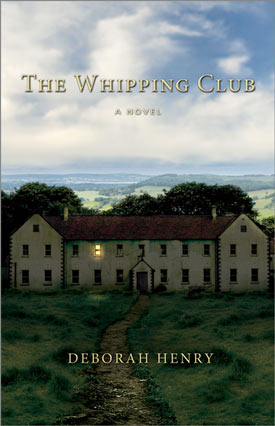
The Whipping Club by Deborah Henry
Book Review by Zinta Aistars
Hardcover: 312 pages
Publisher: T. S. Poetry Press (February 10, 2012)
Price: $32.00
ISBN-10: 0984553185
ISBN-13: 978-0984553181
Author Deborah Henry has said about the writing of her debut novel: “I
wrote The Whipping Club because what I found hidden, I needed to uncover.”
An understatement, no doubt, as first novels of this scope aren’t written
by merely turning over a rock. That had to be at very least a sizeable boulder, and the courage to write it equally so. The
Whipping Club is a story about Marian McKeever, a teacher and a Catholic, and the man with whom she falls in love, a journalist
and Jewish, in Dublin, Ireland, of 1957. It is about the child she carried at the time of their engagement, but felt she couldn’t
keep. It is the story of an unforgiving society that would rather look the other way than to face its troubles, about churches
corrupted by power, about the dark secrets of orphanages and homes for unwed mothers, and the abuse so prevalent in these
institutions.
With that premise comes a great deal of suffering, and for no one more than the
abandoned child. In 1957 Ireland, to marry out of one’s faith was unacceptable enough, but to carry a child as a young,
still unwed mother was beyond forgiveness. The young Marian made the heart-wrenching decision (or perhaps, more accurately,
was forced into this decision by the norms of that time) to give birth to her child, but then give it up to what she hoped
would be a better life than the one she could offer. She entered a home for unwed mothers, keeping her secret even from her
fiancé. After all, his family was already up in arms about their inter-faith marriage.
Based on extensive research, including a trip to Ireland, Henry delves deep into
the horrors behind closed doors of power and privilege. Henry is herself Irish-American and born of inter-faith parents, Jewish
and Catholic. A seed for a novel may be born there, but Henry has created a story from that seed that touches all hearts that
can still be touched, and shakes up even those who would rather be unshaken and remain asleep—The Whipping Club whips
up emotion that is difficult and painful. Few things can be more painful than the loss of a child, let alone facing up to
the abuse of that child.
The home for unwed mothers is a cruel place of forced penance on pregnant girls,
no matter the circumstances of their condition. The girls are sent out to “mow” the lawn by pulling up sheaves
of grass with their hands. They are taunted and punished and humiliated without and beyond reason, yet their suffering is
shadowed by what happens to many of their children. Rather than being adopted by families, many of the children are placed
instead in orphanages where sexual abuse is rampant, beatings are an everyday occurrence, and ever thicker and darker lies
are told to maintain cover. Children die, and no one flinches.
When Marian and Ben come full circle to confront the reality of the child left
behind, by then having a 10-year old daughter, any fantasies Marian may have held as comfort that her child was better off
are shattered. Her unwavering search for her son is perhaps not nearly as mesmerizing as her struggles to connect with him
once she finds him. A great many doors come bursting open, and a great many shadows are drawn into near-blinding light.
If ever the story becomes almost too heavy to bear, it is lightened again by
the characters that do the right thing, overcoming fear and threats and societal pressure. Throwing lifelines to the reader
are the resilience and will to survive of the children. Children are a powerful force, and in spite of the sins of the adults,
enough of them survive to give a corrupt society hope for a more tolerant and compassionate future. Classic moments of reunited
mother and child, even if only momentarily, brighten the storyline enough to keep the suffering from becoming overpowering—yet
just weighty enough to stay with the reader long after the book is done.
“Adrian. The child she had never forgotten stood there, in between Father
Brennan and Nurse, and to Father Brennan’s left, the short and strapping Sister Agnes, but they could all disappear
into thin air. Except for him. The yearning had never diminished. All these years, all she had ever wanted was to see him
again in the flesh, and dreamed that he would be returned to her and their home where he could be safe and happy.
“Marian crouched down so that she could gaze into his eyes. She desperately
wanted him to feel her love for him. She wanted him to know that she was sorry, wanted to tell him that she hoped they could
make up for lost time. All this time. Still, she could have never found him. How many times had she secretly daydreamed about
him since he was ripped from her life? How her da would have wanted him, too! She must remain calm in front of the fat Sister.
He was a big boy, a beautiful boy. He had the map of a McKeever on his face. She reached toward him and brought him into her
arms. She felt her body shaking, the heat of shame scouring her.”
Deborah Henry’s first short story was published by The Copperfield Review,
was a historical fiction finalist for Solander Magazine of The Historical Novel Society and was long-listed in the 2009/10
Fish Short Story Prize. The Whipping Club is her first novel and was chosen for Oprah’s Summer 2012 reading list. She
lives in Fairfield, Connecticut, with her husband and their three children. She is currently at work on her next book. Visit
her at deborahhenryauthor.com. Henry’s work has also been published in The Smoking Poet. Read her author interview in this issue.
|


